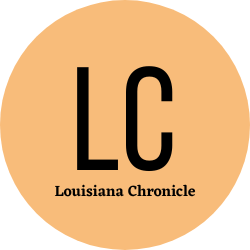Bankruptcy Law Explained
by siteadmin

Bankruptcy law governs the obligations and rights of creditors and debtors. It offers overburdened individuals and businesses an opportunity to resolve and reorder their financial affairs while providing protection for their creditors.
In a bankruptcy case, a person or business surrenders non-exempt property to a bankruptcy trustee, who liquidates it and distributes the proceeds to creditors. The person or business may keep some personal property and possibly real estate.
History
Bankruptcy law has a long history in the United States. Traditionally, bankruptcy has been a source of social and political conflict between creditors and debtors.
The first bankruptcy law was passed in 1800 by Congress, modeled after English bankruptcy laws, and enacted in response to financial panics. It was primarily designed to protect merchants from the loss and liquidation of their assets by creditors.
It also included a provision for composition, which allowed a debtor to distribute his assets among his creditors to settle the case. However, the composition provision was controversial, and a number of complaints were filed against it.
The 1841 Bankruptcy Act was a major step forward in the evolution of bankruptcy law. It allowed both voluntary and involuntary bankruptcies, introduced the concept of preferential transfers before bankruptcy, and broadened the scope of occupations that could use the law.
Discharge of Debts
Bankruptcy law provides that a debtor may obtain a discharge of certain types of unsecured and secured debts. The discharge is a permanent court order that eliminates the debtor’s personal liability for these debts and releases creditors from further attempting to collect them.
The discharge prohibits creditors from contacting debtors by mail, phone, or in person; filing or continuing lawsuits to collect discharged debts; or attaching wages or property. The court can impose sanctions against creditors who violate this order.
A bankruptcy discharge does not relieve a debtor from any secured obligations (such as mortgages and car loans). However, creditors can still repossess or foreclose on the property to recover the original debt.
The United States Bankruptcy Code lists 19 types of non-dischargeable debts, including spousal and child support; alimony; fines and penalties; debts to governmental units; debts for willful and malicious injuries to person or property; debts owed to tax-advantaged retirement plans; and student loans. Debtors are also not discharged from debts incurred as the result of misconduct, such as opening an account fraudulently or driving under the influence of drugs and alcohol.
Reorganization of Debts
In chapter 11 bankruptcy, a debtor can propose a plan to reorganize its business operations, debts, and assets. It may do this through a combination of different techniques, including redistributing assets to creditors and liquidating assets to pay creditors.
A reorganization plan must satisfy the "best interests of creditors" test. This means that each creditor must receive under the plan something that is equal to what they would have received if the debtor had filed a chapter 7 bankruptcy.
A reorganization plan must also be drafted in a way that satisfies the requirements of federal law for allowing a debtor to continue operating its business while reorganizing its obligations. It must also be fair to the various classes of creditors.
Representation of Creditors
The representation of creditors is an important aspect of any bankruptcy. In a business case, it involves both unsecured and secured creditors, as well as equity holders.
Creditors must file a proof of claim with the court to describe the debt they are seeking payment for on behalf of the debtor. This is a complicated process that requires the expertise of an experienced bankruptcy lawyer.
Secured claims typically arise from a creditor’s interest in real property, vehicles, or other collateral. Our firm regularly represents creditors in valuation disputes involving the value of real estate or other assets.
We also represent secured lenders in proceedings to lift the automatic stay, a restriction on the ability of a creditor to collect on pre-petition debts. We are familiar with these types of motions and rely on this experience to assist our clients in protecting their rights throughout the bankruptcy process. For example, we have recently represented a lender in its attempt to protect a significant portion of a debtor’s newly generated cash proceeds through a cash collateral order and other forms of adequate protection.
Bankruptcy law governs the obligations and rights of creditors and debtors. It offers overburdened individuals and businesses an opportunity to resolve and reorder their financial affairs while providing protection for their creditors. In a bankruptcy case, a person or business surrenders non-exempt property to a bankruptcy trustee, who liquidates it and distributes the proceeds to…
Recent Posts
- Expert Cleaners Lexington Announces Commitment to Safe, Sustainable Cleaning Practices, Expanding to Georgetown, KY
- Ensuring Quality and Safety: The Importance of Professional Wood Floor Restoration
- Got Flow Plumbing & AC Introduces Advanced Hydro Jetting Services for Superior Drain Cleaning in Houston
- DuraCon Restoration Expands Service Area with New Dallas / Ft Worth Location
- Optimizing Your Website for 2024 and Beyond: A Guide for Contractors and Business Owners
